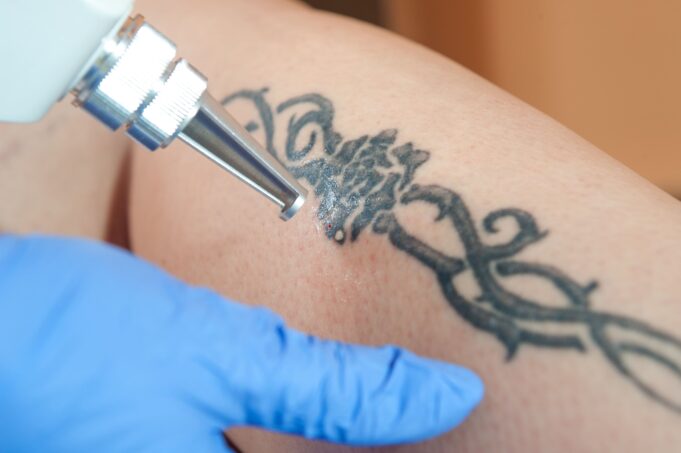Tattoos often symbolise a moment in time, but what once felt meaningful may no longer reflect who you are. Whether it’s a faded design or a decision made on impulse, tattoo removal offers a clean slate, but what actually happens to your skin during the process?
Laser Tattoo Removal: The Leading Method
Laser tattoo removal is the most advanced and widely used method today. It works by delivering high-intensity light pulses that target the ink beneath your skin. These laser pulses break the ink into tiny fragments, which your immune system gradually eliminates.
As explained by the Dr. Tanja Phillips Clinic,
“The laser affects the tattoo with very short and strong laser pulses that penetrate deep into the skin, without injuring the top layers. These pulses are then absorbed by the pigments in the ink and as the laser light is transformed into photoacoustic waves, it mechanically breaks up the ink into smaller particles. These are then naturally absorbed by the body’s own immune system.”
Source: TanjaPhillips.com
Black ink is typically the easiest to remove since it absorbs all laser wavelengths. Other colours, especially blues and greens, may require additional sessions. The number of treatments depends on various factors, including the tattoo’s age, depth, location, and ink type.
Although the laser doesn’t damage the outer layers of skin, mild side effects such as redness, swelling, or blistering can occur post-treatment. Proper aftercare is essential to avoid complications like pigmentation changes or, in rare cases, scarring.
Other Tattoo Removal Options
While laser remains the most effective method, other techniques still exist, though they are less commonly used and often come with greater risks.
Surgical Excision
This method involves cutting out the tattooed skin and stitching the area closed. It’s most suitable for small tattoos and guarantees removal but always leaves a scar.
Dermabrasion
This technique sands down the skin to remove ink but can lead to scarring and extended healing times.
Tattoo Removal Creams
Often marketed as non-invasive solutions, these creams rarely reach the dermis where ink resides and may irritate the skin without providing meaningful results.
Making the Right Choice
Tattoo removal is a process, not a quick fix. But with the right professional guidance, advanced laser technology can offer remarkable results. Always choose a qualified clinic with experience in laser procedures and take the time to understand the expected outcomes and healing process.













